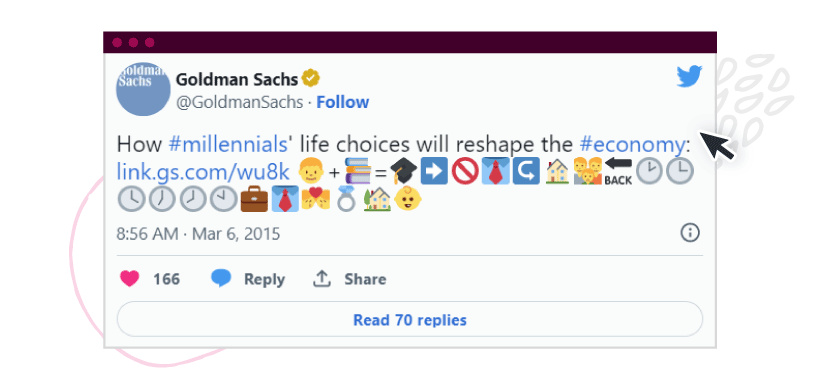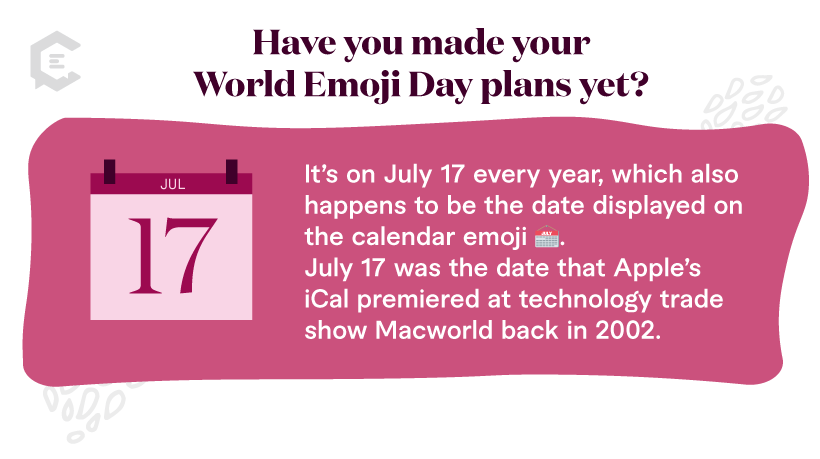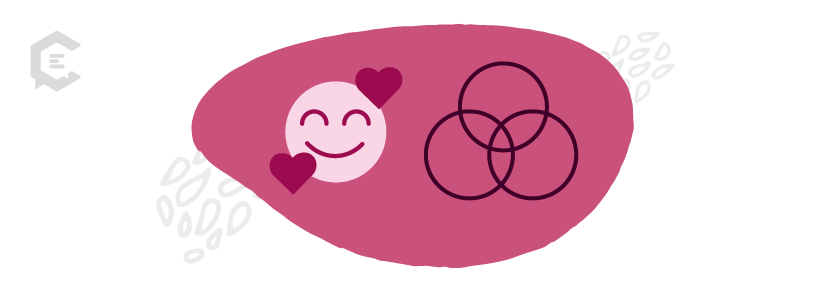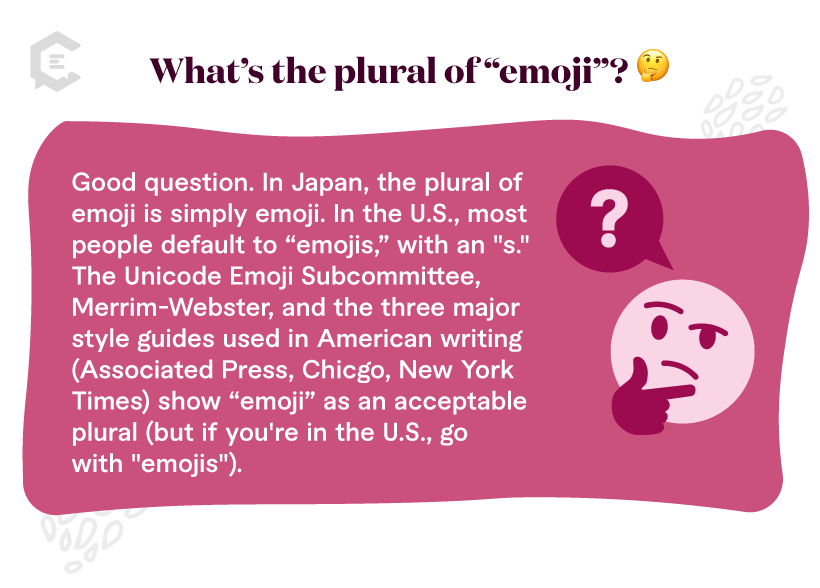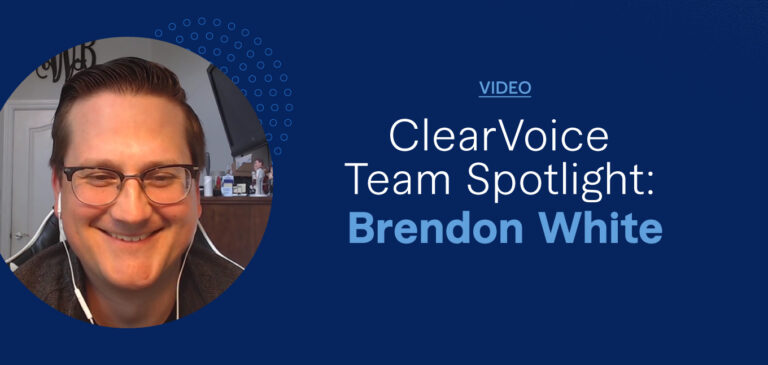People like to express themselves. Me, you, everyone — we all want to be heard and understood. Right?
✅ ⚡
Right. ✌
Emojis are a means to add tone, humor, and emotional subtext to your communication. Whereas conversations in real life benefit from the subtleties of facial expressions and body language, text-only digital communication can leave the reader wondering HOW you meant something.
In marketing, emojis not only add this nuanced communication, but they can drive engagement and boost open and click-through rates. They add color — literally and figuratively — to your brand messaging.
Emojis have made their way into mainstream marketing, and now you stand at a crossroads: Should you be using them in your brand’s marketing efforts?
The answer is a firm ♀️
Emojis in your digital marketing – should you do it?
First question: Are you B2B or B2C?
If you’re a B2C business in any industry other than funeral planning, yes, go ahead and use emojis in email and on social media, with one big caveat — IF they fit your your brand voice and personality. It’s probably no surprise that some people regard emojis as juvenile or unprofessional, so choose wisely.
Even financial and legal services? Yes, even B2C financial and legal services providers can comfortably use emojis in their email and social media marketing. Check out this tweet from Goldman Sachs, a multinational investment bank and financial services company:
Emojis are an excellent way to enhance B2C messaging and make your email and social presence more interesting and fun. Just be judicious about their use.
>> Read: 5 Proven Ways to Improve Your Email Open Rates
What about B2B? Here we start treading in choppier waters. Yes, you can use emojis. Just know your audience and industry, and use them sparingly. A cancer treatment center probably shouldn’t use them willy-nilly, but a well-placed in a social post would work fine.
Would your audience be receptive to emojis? Would they understand the nuance you’re trying to add to your message? Is it appropriate? Is there a possibility the reader would find it distasteful or you less competent?
>>Read: Beyond Emojis: How Writers Can Achieve Emotional Granularity
20 popular marketing emojis and what they mean
You’ll note that there are no faces on this list. Faces are wildly popular; in fact, of the top 10 emoji used worldwide, eight of them are faces, the Unicode Consortium reports: ❤️ But this list assumes you know what face-emojis mean.
- Rocket ship: We’re growing, things are really taking off, progress
- Flexed biceps: We’re killing it, strength, success, showing off
- Bouquet of flowers: Congratulations and celebrations; a gift for you
- Person doing cartwheel: Joy, excitement
- Folded hands: Thank you, appreciate you; also, let’s hope so
- Pile of poo: Something is bad, but we’re good sports about it
- ✊ Raised fist: Power, solidarity, pride
- Raising hands: Woohoo! Celebration, success
- ✨ Sparkles: New, clean, wonderful
- Fire: Something’s hot, popular, intense, awesome
- Collision: Bang, crash, excitement
- Raised arm: Sign me up, enthusiasm, pick me
- Eyes: Look at this, check this out, this is cool
- See-no-evil monkey: Embarrassment, shyness, we goofed
- Women with bunny ears: Festivity, fun, a party-loving nature or atmosphere
- Light bulb: Great idea, how about this
- Hundred points: 100%, agreement, keep it real, to be “all in” on something
- Rainbow: Happiness, everything is coming up roses
- ✅ Check mark button: Yep, yes, affirmative, we have that
- ⚡ Lightning: Fantastic, electric, awesome
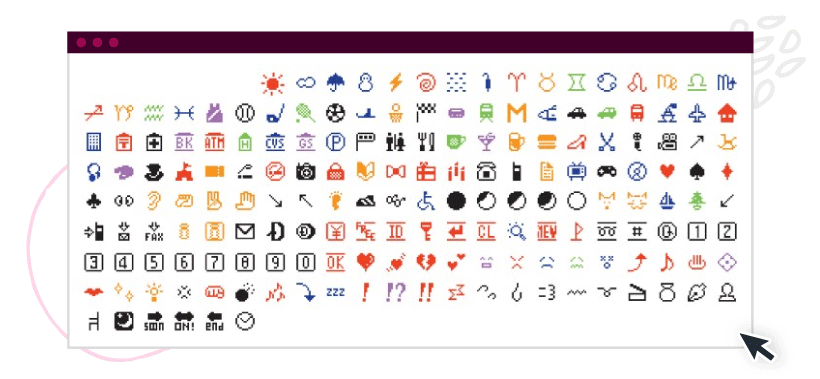
10 emojis that may not mean what you think
The same emoji can mean different things to different generations. Gen Z often uses them ironically and not for their “intended” meaning. According to Adobe’s 2022 U.S. Emoji Trend Report, 74% of Gen Z users said they use an emoji for a different meaning than what one would think. Compare that to 65% of millennials, 48% of Gen X, and 24% of baby boomers. And some emojis are just a “no” for any business purpose.
- Skull and crossbones: Younger people use this one to indicate something is funny (“I’m dead”) or shocking, whereas older folks tend to use this to demonstrate someone or thing is toxic.
- Thumbs up: You’re probably safe to use this one as it’s intended, but just know that Gen Z often uses it sarcastically.
- Nail polish: To Gen X and many millennials, this one means is used to indicate nonchalance, fanciness or sass. To the younger generation, this one is sometimes used to indicate that you are LGBTQ.
- Dizzy face: This emoji is often used to indicate someone is under the influence of alcohol or drugs.
- Tears of joy: This is on the top 10 list of emojis used worldwide, so despite reports that this emoji is no longer cool, you should be OK. But if you market strictly to Gen Z, skip it. To them, it’s an old person’s emoji.
- Red heart: Once again, it’s OK to use, just know that much of Gen Z sees this as overused and belonging to old people.
- Loudly crying face: Yes, people use this one to express sadness, but just as frequently, it’s used to express something is so cute or so touching, they just can’t handle it.
Need a little content help?
As you navigate the oft-changing landscape of emoji marketing, reach out to ClearVoice if you need a content partner. We develop just about every type of content, including social media and email. We can help you develop a content marketing strategy and boost leads and social engagement (just like emojis can ). Let us help you with strategic, quality content production to grow your brand’s visibility. Get in touch today!
